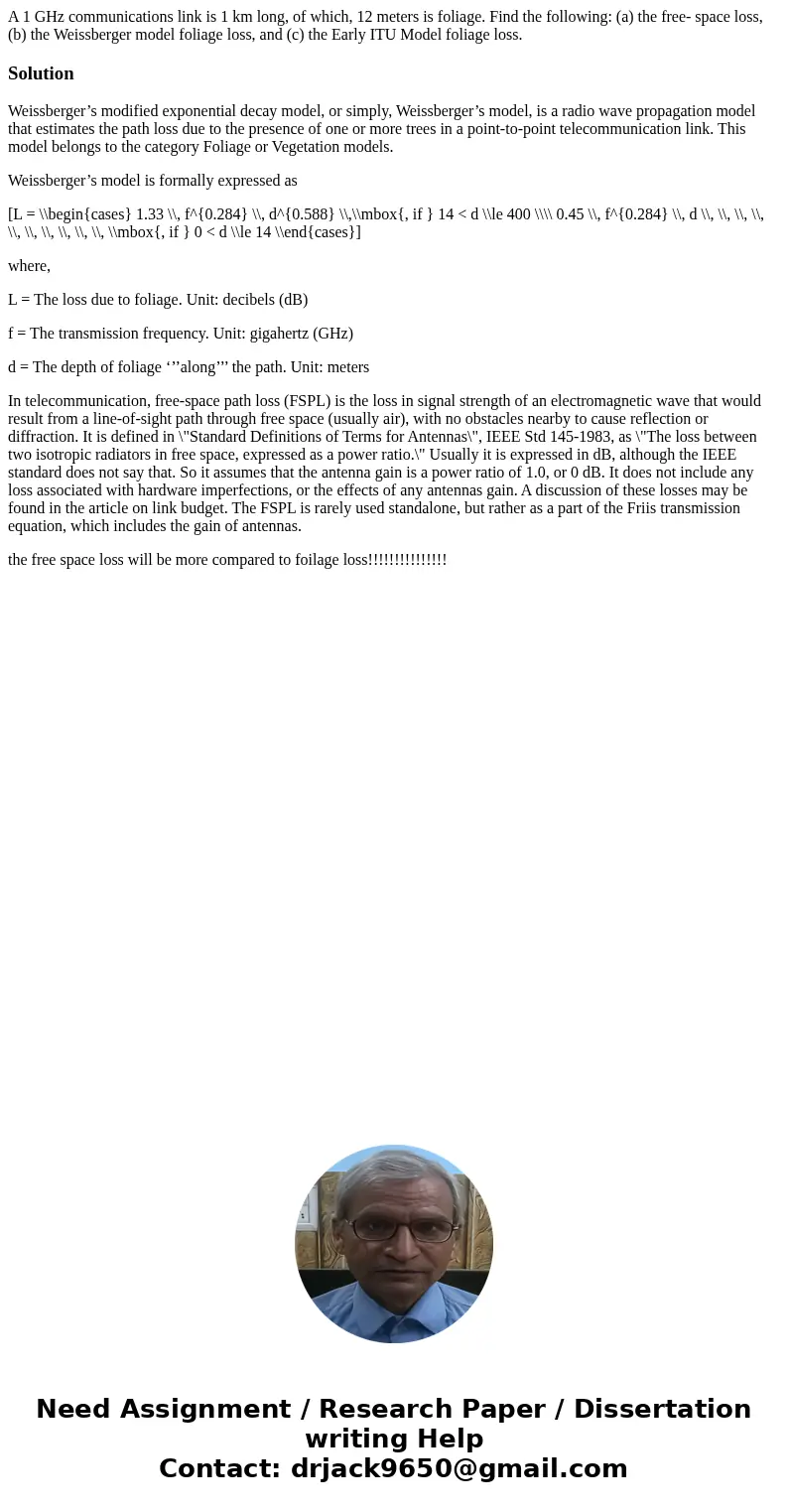A 1 GHz communications link is 1 km long of which 12 meters
Solution
Weissberger’s modified exponential decay model, or simply, Weissberger’s model, is a radio wave propagation model that estimates the path loss due to the presence of one or more trees in a point-to-point telecommunication link. This model belongs to the category Foliage or Vegetation models.
Weissberger’s model is formally expressed as
[L = \\begin{cases} 1.33 \\, f^{0.284} \\, d^{0.588} \\,\\mbox{, if } 14 < d \\le 400 \\\\ 0.45 \\, f^{0.284} \\, d \\, \\, \\, \\, \\, \\, \\, \\, \\, \\, \\mbox{, if } 0 < d \\le 14 \\end{cases}]
where,
L = The loss due to foliage. Unit: decibels (dB)
f = The transmission frequency. Unit: gigahertz (GHz)
d = The depth of foliage ‘’’along’’’ the path. Unit: meters
In telecommunication, free-space path loss (FSPL) is the loss in signal strength of an electromagnetic wave that would result from a line-of-sight path through free space (usually air), with no obstacles nearby to cause reflection or diffraction. It is defined in \"Standard Definitions of Terms for Antennas\", IEEE Std 145-1983, as \"The loss between two isotropic radiators in free space, expressed as a power ratio.\" Usually it is expressed in dB, although the IEEE standard does not say that. So it assumes that the antenna gain is a power ratio of 1.0, or 0 dB. It does not include any loss associated with hardware imperfections, or the effects of any antennas gain. A discussion of these losses may be found in the article on link budget. The FSPL is rarely used standalone, but rather as a part of the Friis transmission equation, which includes the gain of antennas.
the free space loss will be more compared to foilage loss!!!!!!!!!!!!!!!

 Homework Sourse
Homework Sourse